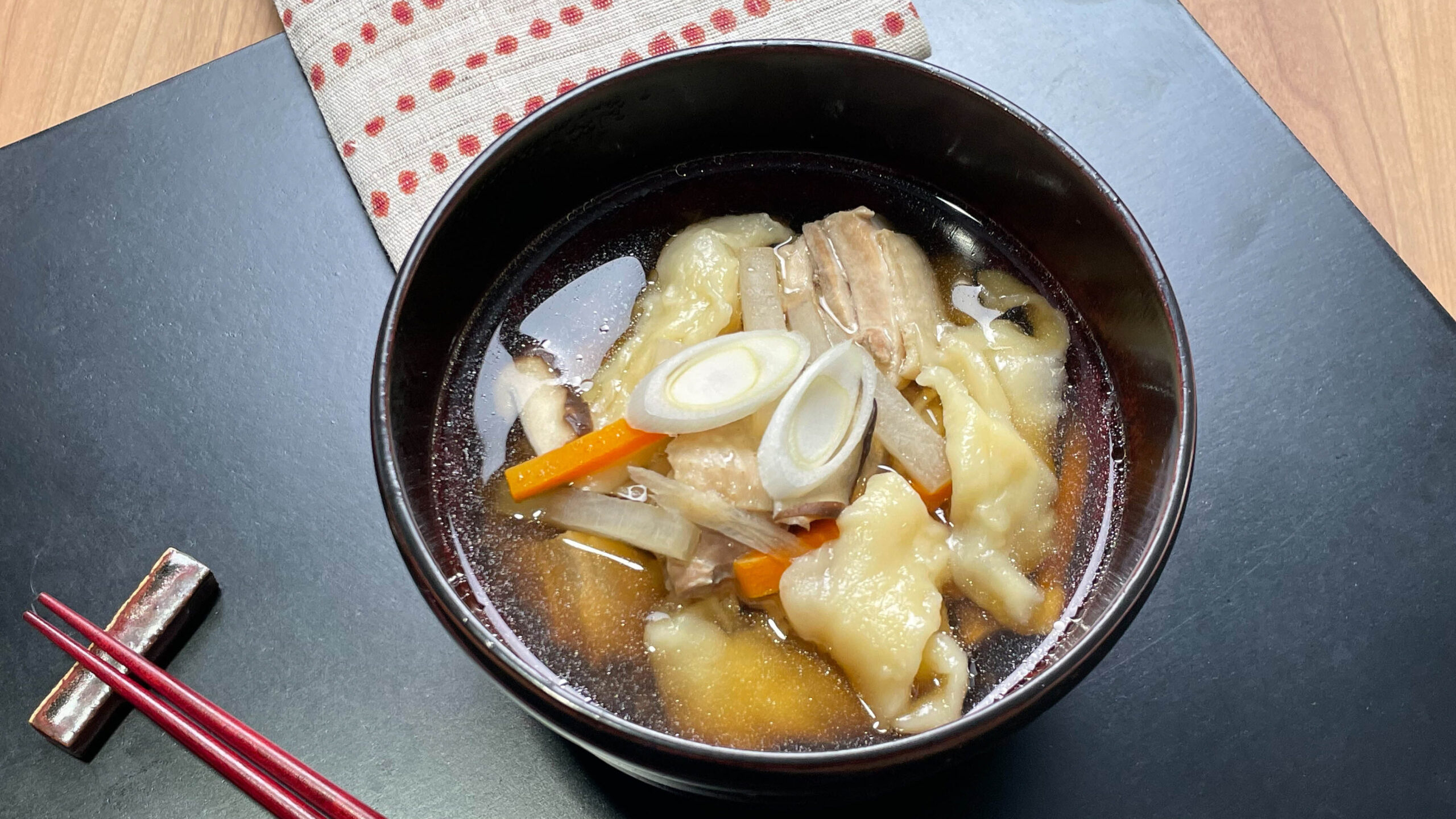
Hey there! Up in Iwate Prefecture, especially in the central region, there’s this comforting dish called “Hittsumi” or “Hittsumi-jiru.” It’s a simple yet hearty soup featuring hand-torn wheat flour dumplings and seasonal veggies, and it’s got a cool story about how folks adapted when rice wasn’t plentiful.
Dish Name: Hittsumi
- Region / Location: Iwate Prefecture
- Primary Area of Tradition: Primarily the central region, but enjoyed throughout the prefecture
- Main Ingredients: Wheat flour, seasonal vegetables (like root vegetables), and depending on the area, river fish, river crabs, chicken, mushrooms, etc.
How It’s Eaten / Served
It all starts with kneading wheat flour and water into a dough. This dough is then stretched thinly and torn by hand into bite-sized pieces, which are then simmered in a broth with ingredients like chicken, burdock root, carrots, and mushrooms. The key is to knead the dough well and let it rest to get those nice, chewy dumplings. What goes into the broth really depends on the region and the time of year – you might find seafood in coastal areas, river crabs or fish inland, and even matsutake mushrooms in places like Iwaizumi.
Cultural Background and Preservation
In the central region of Iwate, near the Kitakami River, rice cultivation was significant, but tough winters sometimes led to poor harvests. To ensure a stable food supply, they also grew barley, wheat, and buckwheat, leading to a culture of “shitone-mono” – dishes made from kneaded flour. Hittsumi became a go-to, especially in years with bad rice crops. The name “hittsumi” is said to come from the local dialect “hittsumamu,” meaning “to tear off.” It’s known by other names too, like “totte-nage” and “hatto.” Traditionally a home-cooked meal for supper or when helping hands gathered on the farm, it’s still served at local events today. While soy sauce-based broths are common, the seasoning varies by region and family, and sweet versions like “azuki hittsumi” and “zunda hittsumi” also exist. Nowadays, you can find pre-made hittsumi flour and sets with broth, and local restaurants and school lunches keep this tradition alive. Ootsuchi Town is even aiming to make hittsumi a local specialty, and the Iwate Prefecture Fresh Noodle Cooperative has designated December 3rd as “Hittsumi Day” to promote it. Iwate Prefecture also recognizes “Hittsumi” experts as “Iwate Food Masters,” ensuring its legacy continues.
Additional information:
- Shitone-mono: A general term for dishes made by kneading flour with water in the Iwate region.
- Matsutake mushroom: A highly prized and fragrant mushroom, especially known in the Iwaizumi area of Iwate.
- Azuki: Sweet red beans, sometimes used in Japanese desserts and in sweet versions of savory dishes.
- Zunda: Mashed edamame (young soybeans), often sweetened, used in various dishes in northeastern Japan. In the case of “zunda hittsumi,” it would be a sweet topping or addition.
The information about regional cuisine featured on this website (Piggy's Grandma of Japan) is summarized and adapted from the Ministry of Agriculture, Forestry and Fisheries of Japan (MAFF) website, "Our Regional Cuisines"Additional commentary is provided based on the unique experiences and perspectives of the site's editors.
The copyright for the original content regarding regional cuisine belongs to the Ministry of Agriculture, Forestry and Fisheries of Japan.
The summaries and adaptations published on this site are intended for informational purposes only. Piggy's Grandma of Japan does not guarantee the accuracy or completeness of this information. For the most accurate and complete details, please refer to the original pages on the MAFF website.

